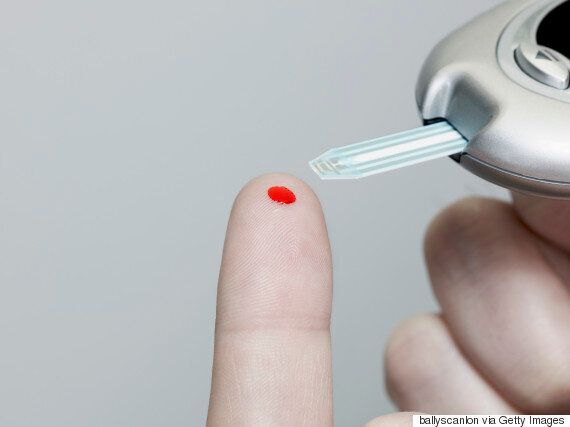Of the places in your body where you do not want things to go awry, the vagina is definitely up there on the list.
And yet, vaginal thrush (or yeast infections) is remarkably common: almost three-quarters of women will get a yeast infection at least once in their lifetime, according to the Centers for Disease Control and Prevention (CDC) in the U.S.

The bad news about yeast infections is that they are itchy, uncomfortable, and sometimes, very annoying. But the good news is that they are common, which means most yeast infections can be treated with inexpensive medication bought at any pharmacy.
Here are 12 things you should know about yeast infections, from what causes them in the first place to how you can prevent the yeasty beasties in your vagina from running amok in the future.

Candida-what? When we talk about yeast infections, we’re referring to genital or vulvovaginal candidiasis, an overgrowth of the candida yeast found in all of our bodies — vagina and environs included. Fancy!

We’re all yeasty: It doesn’t sound like yeast should be in vaginas, but it’s actually a pretty normal state of affairs. "Yeast cells occur naturally in humans and this is not considered sexually transmitted,” gynaecologist Dr. Antonio Pizarro tells The Huffington Post Canada. Our bodies always have candida on or in them in small amounts — it's only a problem when the yeast begin growing far more than normal.

But sometimes yeast behaves badly: Problems start when yeast gets out of control, growing when and where it ought not to be growing. In the vagina, this can happen because of hormonal changes, or because of shifts in the normal acidity of the vagina. "Genital yeast infections, or vulvovaginal candidiasis, are common overgrowth of yeast cells,” Pizarro says. The candida multiplies, symptoms start to show up, and you’re miserable.

Some people are more susceptible than others: Some women never get a yeast infection, while others deal with them several times a year. There are some factors that can make them more or less likely. "The factors that predispose to more severe genital yeast infection or overgrowth include obesity and diabetes,” Pizarro says. You can also get a yeast infection on the penis, but that is relatively rare.

What are the symptoms? If you’ve ever had a yeast infection then you are probably more familiar with the symptoms. "The cardinal symptom of yeast infection is itching accompanied by a thick white discharge from the vagina,” Pizarro says. The discharge is often described as resembling cottage cheese. (Sorry.) The genital itching can also come with a burning sensation. Other genital infections can have similar symptoms, so it is worth getting these checked out.

Who has higher risk: According to the CDC, those with a weakened immune system are at higher risk for yeast infections. There are several different factors that can lead to reduced immunity: a condition like HIV/AIDS, pregnancy, diabetes, immune-suppressing medication, use of corticosteroids, and long-term antibiotic use.

Preventing thrush: There are some ways to help prevent yeast infections. Wearing cotton underwear can help reduce risk by preventing vaginal overheating, which encourages yeast growth. This also works for avoiding super-tight clothing. The CDC says there is some evidence that probiotics can help those with persistent yeast infections.

It can often be treated over-the-counter: In uncomplicated yeast infections, over-the-counter treatments can be quite effective, Best Health magazine notes. "A reasonable first step in treating vaginal yeast for women without chronic medical conditions is use of over-the-counter vaginal antifungal treatments — yeast infection creams and ovules,” Pizarro says.

Which treatment is best? The first time you check out the selection of yeast infection treatments at your local pharmacy can be quite confusing. There are a variety of options available, for different lengths of time and in varying formulations. "Treatment can include prescription-strength antifungal creams, oral preparations, boric acid suppositories — usually for patients affected by recurrent infection —and topical antifungal powders for skin involvement,” Pizarro says. "I generally recommend creams, suppositories, or powders whenever possible to lessen the metabolic burden on the liver that could be caused by pills.” If you’re unsure which is best, talk to the pharmacist or your physician.

But for some, thrush is more serious: For some people, this infection requires immediate medical attention. "Women who have diabetes mellitus, those who use immune-suppressing medications, and pregnant women should contact their care provider as soon as they recognize the problem,” Pizarro says.

And it can cause problems if left untreated: Don’t just wait for a yeast infection to go away on its own. "Severe cases of vulvo-vaginal yeast infections can lead to ulcers, severe swelling, and profuse vaginal discharge,” Pizarro says. "Rarely, yeast of the vulva can become severe enough that opportunistic bacteria, such as Staph, also invade the tissue."

When to see a doctor: If over-the-counter treatment doesn’t work, or things aren’t improving relatively quickly, it’s worth a visit to your family doctor or gynecologist. "Women should expect relief within a day and they should see a care provider if there is no relief or if the symptom comes back after an initial response,” Pizarro says.